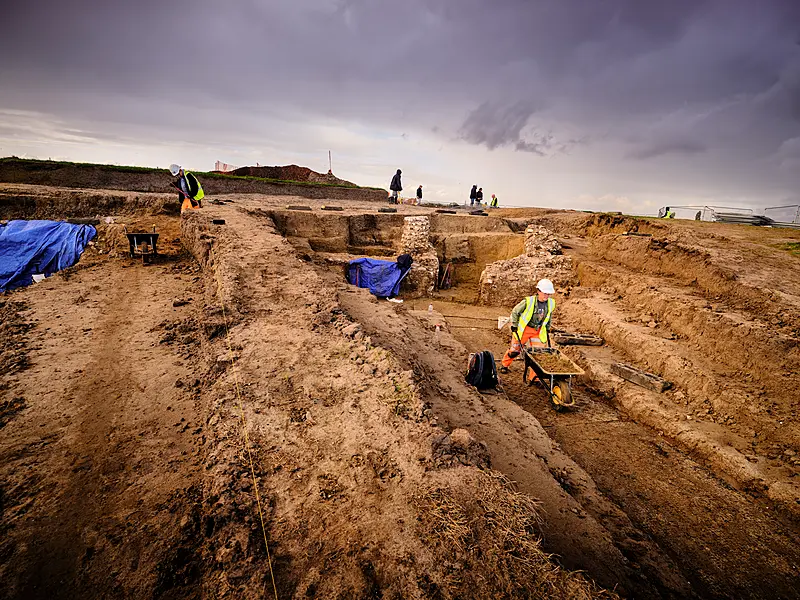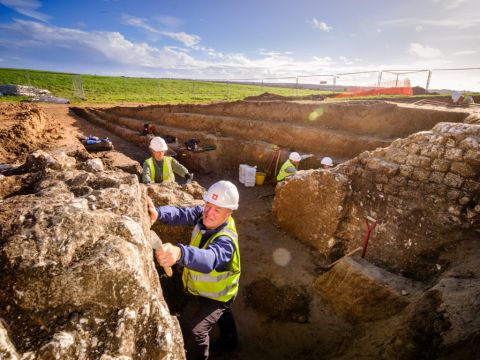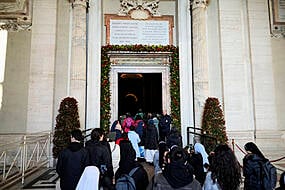An excavation into a Roman amphitheatre has uncovered evidence of a holding cell for those who were about to meet their fate in the arena, English Heritage has revealed.
The Richborough Roman Amphitheatre in Kent is believed to have provided the inhabitants of the town with a place for public spectacles and entertainment such as wild animal hunts, executions and gladiatorial combat.
Other finds – such as animal bones, coins and pottery fragments – have also led archaeologists to believe the town was inhabited by civilians until the end of Roman rule at the turn of the 4th/5th century.

The excavation also uncovered an almost complete skeleton of a purposefully buried Roman cat and traces of painted decoration to the plaster face of the arena wall, which is the first known instance of this on any Roman amphitheatre in Britain, English Heritage said.
The recent discoveries have provided further evidence that Richborough was an important Roman site in Britain, and the excavation has revealed further details of how it was constructed.

Archaeologists believe the exterior arena wall was up to six metres wide and made of stacked turf, while the interior wall was made of mortared chalk blocks with a rendered and plastered face.
It was here that traces of paint were discovered in what once would have been vivid reds and blues, a discovery which is said to be unprecedented in amphitheatres in Britain.

The English Heritage team has said the use of chalk and turf as building materials is an “exciting discovery” which suggests the amphitheatre may have been built early in the Roman period, in the 1st century AD.
Paul Pattison, English Heritage senior properties historian, said: “The discoveries we’ve made during the excavation at Richborough are startling and exciting, and dramatically transform our understanding of the structure of the amphitheatre and the nature of adjacent settlement in the town.
“We’ve always known that the Roman fort at Richborough was an important place to the Romans, until the very end of their rule, and now we have been able to gather evidence that much of the town outside the fort may also have been settled until the very end.”

Tony Wilmott, a senior archaeologist at Historic England, added: “Amphitheatres are a unique Roman creation and this one – which could seat as many as 5000 spectators – may have been constructed in the 1st century AD in the early phase of Roman rule.
“The evidence of painted decoration we have found on the arena wall, a unique find so far in amphitheatres in Britain, is remarkable, and a wonderful reminder that aspects of Roman culture abroad were also a feature of life in Roman Britain.”
This excavation will form part of a major refurbishment and re-presentation of the site and museum which will take place this winter and open in summer 2022.







